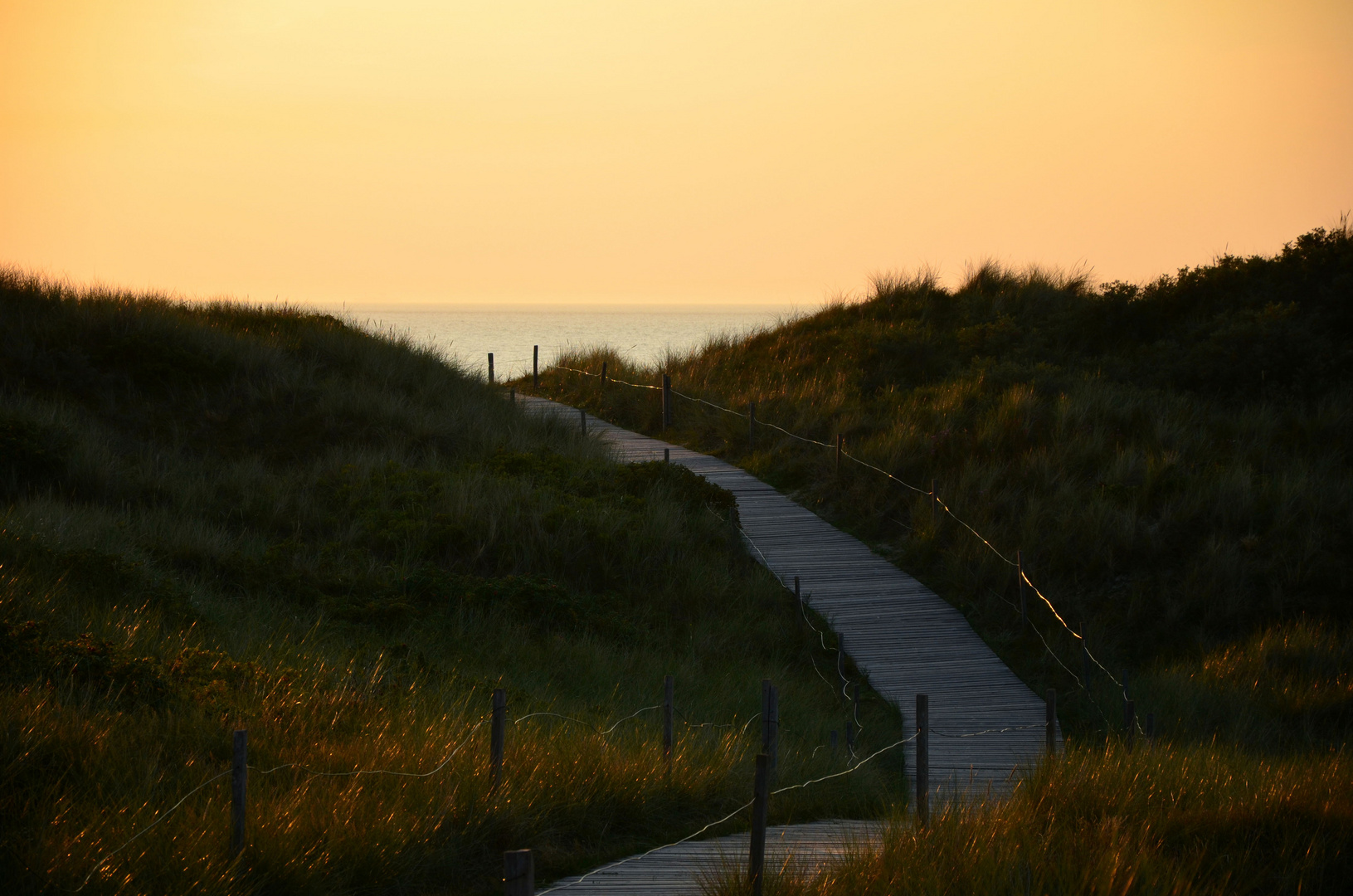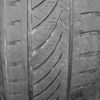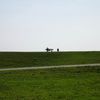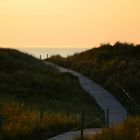Dozy Dune --- Dunes of Spiekeroog
Hier ein Foto, welches ich bei Sonnenuntergang auf der Insel Spiekeroog gemacht habe. Neben dem schönen Wanderweg zum Strand ist vor allem eine s.g. Sekundärdüne zu sehen. Küstendünen machen im Laufe ihres Lebens verschiedene Stadien durch. Am Anfang siedeln sich vor allem salzresistente und extrem ausdauernde Pflanzen an, die man wohl eher als kleine grüne Flecken auf im Sand wahrnimmt. Durch Sandverwehungen sammelt sich dort aber immer mehr Sand an, Salze und Carbonate werden rausgewaschen und mehr und mehr Pflanze siedeln sich an bis eine große, vollbewachsene Sekundärdüne entsteht. Durch absterbende Pflanzen und zunehmende Versauerung verlanden Dünen dann immer mehr und Grauerde (Podosol) entsteht, die sehr nährstoffarm ist. Genau solche nährstoffarmen Böden sind allerdings ein Hotspot für Vielfalt, da keine „wuchernden“ Pflanzen alles andere verdrängen können. Deswegen sind Dünen unter anderem auch so schützenswert und leider durch Überdüngung in Küstennähe immer mehr gefährdet.
-----------------------------------------
Here the picture of a sunset made on Spiekeroog, a small German island. Aside of the nice hiking track, the most prominent part of the picture is a so called secondary dune. Coastal dunes are known to experience different states during their life. At the beginning, extremely adapted species that can endure a lot of salt settle at the beach. Due to sand drifts caused by the coastal winds, sand accumulates at these plants. Wind and rain wash away salt and carbonate and more and more plants settle. A secondary dune is made. Plants die and soil is generated that becomes more and more acidic over time. This soil is called “grey soil” in German and is especially nutrient poor. However, a lack of nutrients is a catalysator for the evolution of new species, because no fast growing dominant plant can take over easily. This is why coastal dune should be preserved, and it should be done quick, because the overuse of fertilizer in coastal areas is already threatening this rare habitat.


















Roman Dullek 11/10/2020 18:00
Sehr schönes Motiv.Ausgezeichneter Bildaufbau und eine sehr schöne Lichtstimmung.
LG Roman
ge.org 05/09/2020 18:35
... der weg zum paradies ...georg
Claudio Micheli 03/09/2020 20:55
Bellissima presentazione.Ciao